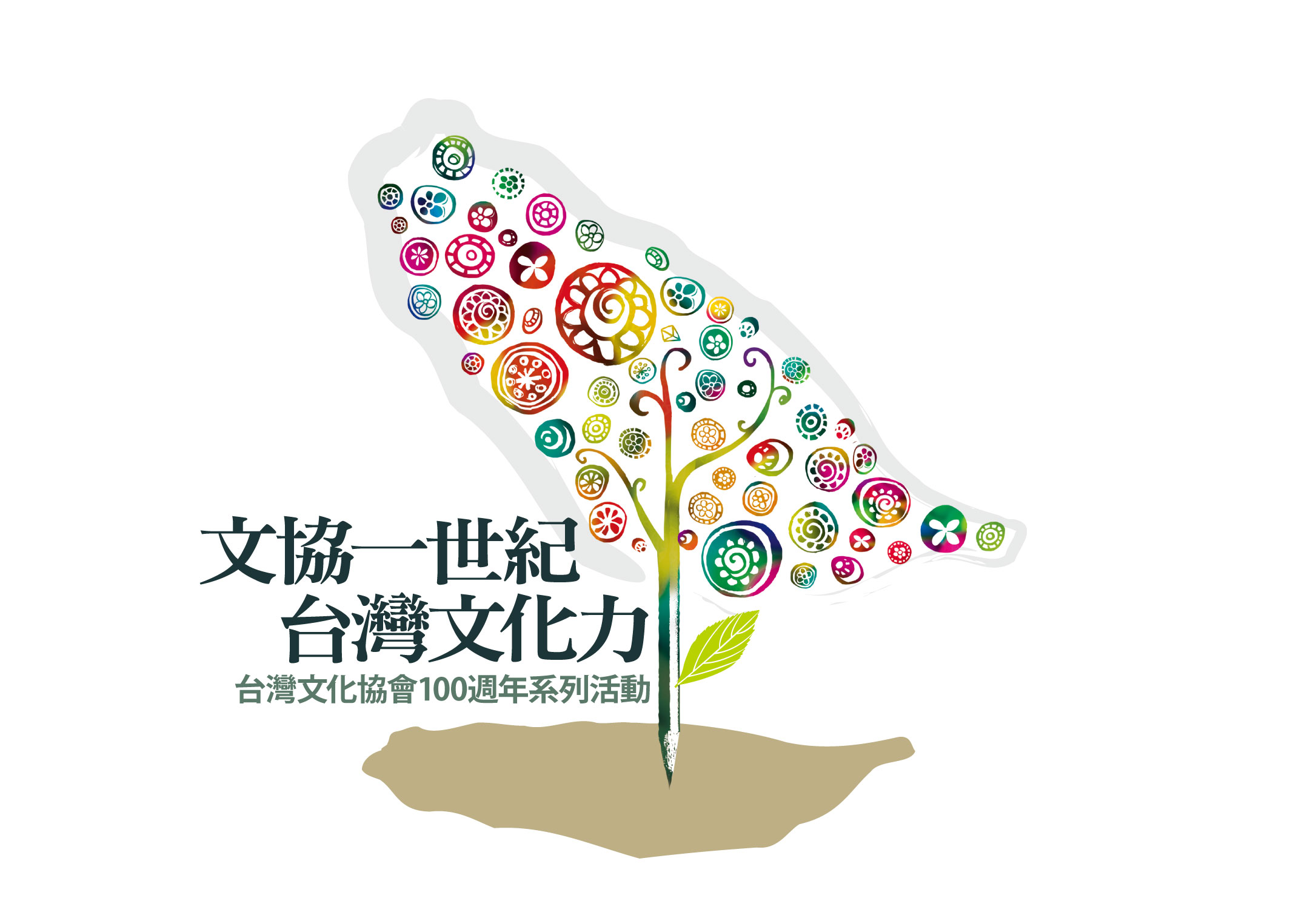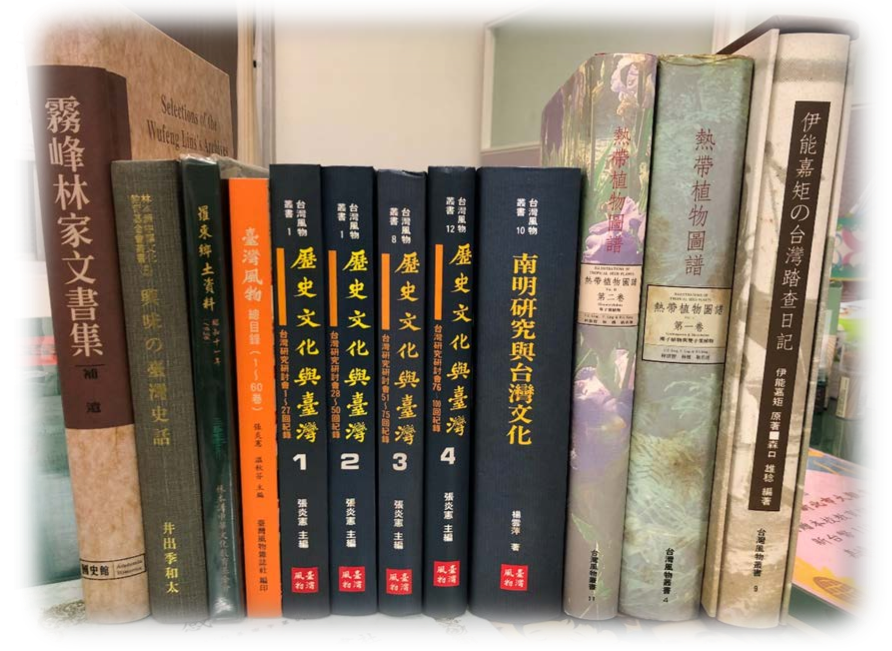 原住民、早住民與新住民
原住民、早住民與新住民
Original, Early and New Inhabitants
戴寶村/Tai Pao-tsun
2001-12-17

Added together the new inhabitants are entering their third generation and look at from the perspective of the acclimatization of three generations, with deep roots in Taiwan, the new inhabitants are all Taiwanese.
台灣是一個多元族群的國家,通常有所謂原住民、福佬人、客家人、外省人四大族群之分,多元族群形塑台灣豐富多樣的文化,而觀察瞭解族群關係的歷史演變,及族群意識發展出的台灣人的認同,乃是建立台灣為一永續發展國家必須面對的課題。本週「台灣歷史之窗」特別邀請中央大學歷史研究所教授戴寶村執筆,以「原住民」、「早住民」與「新住民」三個名稱重新定義生活在這塊土地上的不同族群,除述說各族群文化之演變與分流,亦闡述各族群關係與生活上之融合,多元文化的命運共同體乃台灣國家建構的歷史與未來。
Taiwan is a multi-ethnic country. The ethnic groups are normally classified into the four main categories of aboriginal peoples, Fukienese, Hakka, and mainlanders. Multi-ethnicity has shaped Taiwan’s rich and varied culture and investigating and understanding the evolving history of relations between the ethnic groups and the Taiwanese identity that has developed out of an ethnic consciousness must be faced in order to establish sustained development of the Taiwanese nation. This week, Window on Taiwan has invited Professor Tai Pao-tsun, from the Central University’s Graduate School of History to write specially of the shared destiny of multi-culturalism, that constitutes the past and future of the nation of Taiwan, from the perspective of the ethnic groups who inhabit this land, redefined as the “original inhabitants”, “early inhabitants” and “new inhabitants”, in addition to speaking of the evolution and branches of each group’s culture and expounding on the relationships between the ethnic groups and the intermingling of their lives together.
原住民族–被邊緣化的族群歷史
台灣的原住民族分成十族,目前還在擴衍分族中;39萬人口僅佔台灣總人口的1.7%,各族人口差別甚多,分佈地區又廣,一世紀前才由部落社會編納入近代國家體制,由於長期受外來政權機制的統治及資本主義經濟衝擊,加上文化教育改造,使原住民族的政治、經濟、社會、文化各方面一直處於低落化、邊緣化的處境。
The aboriginal peoples: The history of a marginalized people
Taiwan’s aboriginal people are comprised of ten ethnic groups, which are currently splitting into further ethnic divisions. The 390,000 strong aboriginal population accounts for only 1.7 percent of the total population and there are large differences in the size of the populations of each aboriginal group which are spread over a large area. It was only a century ago that the tribal societies were incorporated into the system of the modern nation. As a result of being subjected to long-term rule by the mechanisms of foreign regimes and the attacks of capitalist economics, in addition to cultural and educational transformations, the politics, economics, society, and all cultural aspects of the aboriginal peoples have continuously marginalized and in a state of decline.
近年來隨著原住民社會運動與政治民主化的走向,原住民事物才成為比較受重視的公共政策,各級政府設立原住民事務部門,教育文化方面也漸有改善。平埔族原住民與早期漢人移民混融而喪失期族群文化特徵,但「有唐山公,無唐山媽」的俗諺和陳順勝、林媽利醫師有關台灣人遺傳基因的研究,提供了台灣人原生論的認同基礎。
It is only in recent years, following the aboriginal social movement and the trend towards democratic politics, that the plight of the aboriginal peoples has received more attention from public policy with the establishment of an aboriginal affairs department at each level of government that the educational and cultural aspects have gradually improved. Intermingling between the Pingpu (lowland) aboriginal tribe and the early Han immigrants has resulted in the loss of their distinct cultural characteristics. However, the folk saying “there are mainland grandfathers but no mainland grandmothers” and research, concerning the genes of the people of Taiwan by Dr. Chen Shun-sheng and Dr. Lin Ma-li provide the theories of the origins of the Taiwanese people with a foundation for identification.
文化再興喚起族群意識與族群認同
平埔族歷史、祭儀、音樂等的文化再現,使一些人重新發現自我而要「脫漢入番」,移居到花蓮的噶瑪蘭(Kavalan)人提出列入原住民第十族的要求,因邵( Sao )族已正名成功,他們可能繼續推動歸屬第十一族原住民的訴求,而十族原住民則有再分族的現象,如花蓮的太魯閣(Truku)族也一直想從泰雅( Atayal )族分立出來。另外,原住民為了進一步爭取其族群權益,鄒(Tsou)族和達悟( Tao )族已在醞釀自治運動。漢人從原漢關係追求尋根認同,原住民的族群運動則呈現追求公平權益,同時也在建構族群認同。
Culture renewing interest in ethnic consciousness and identification
The history, ceremonial rites, and music of the Pingpu culture is reemerging and bringing about a rediscovery of the self and the desire to “escape the Han and join the aboriginal people”, in some people. The Kavalan people who migrated to Hualien have demanded that they be recognized as the tenth aboriginal ethnic group. As the Sao tribe has been successful in getting its name officially recognized, it is likely that they will continue with their demands for recognition as the 11th aboriginal tribe. There is the phenomenon of a further division among the ten aboriginal tribes as seen in the long-term aspirations of the Truku tribe in Hualien to separate from the Atayal tribe. In addition, as part of the aboriginal peoples struggle to further the rights and interests of their ethnic group, a self-government movement is brewing among the people of the Tsou and Tao tribes. The Han people seek identification with their roots through a relationship with the original Han people, while the ethnic movement of the aboriginal peoples is a pursuit of equality rights as they establish an ethnic identity.
原住民的移民因素與定居初期
漢語系移民主要來自中國福建、廣東,因而有福佬( Holo )客家( Hakka)之分,福佬人口約佔 70%,客家人口約佔 15%,相對於原住民實可合稱為「早住民」。早住民受迫於人口壓力的經濟因素而冒險渡過黑水溝來台,因此有「唐山過台灣,心肝結歸丸」、「六死三留一回頭」的心酸諺語。
The reasons for the immigration of the early inhabitants and the early settlement period
The origins of the Han language family immigrants are traced to Fukien and Canton provinces in China accounting for the distinct Fukienese (Holo) and Hakka groups. The Fukienese make up approximately 70 percent of the population with the Hakka accounting for approximately 15 percent and in relation to the aboriginal peoples can together be referred to as the “early inhabitants”. The early inhabitants were compelled to risk crossing the Taiwan Strait as a result of economic factors arising from the pressures of over-population. This can be seen in the folk heartsick sayings, “crossing from the mainland to Taiwan will tie your heart in knots” and “(in crossing) six will die, three will remain and one will turn back”.
早期移民以「賺食人」的心態打拼開拓生活的園地,面對清帝國政府的劣政污吏經常豎旗抗官,不過卻從未成功,如1786-1788年林爽文起兵反清,一度控制近半個台灣,是清代台灣最大規模民變,但因缺乏號召全島住民的政治理念和動員機制,林爽文軍隊南下想進攻台南府城,在嘉義遭到同屬漳州祖籍的諸羅城人守城頑抗,客家人基於保衛鄉土安定家園的觀念,也助清軍平亂。林爽文終於失敗被殺徒留「爽文路」、「爽文坑」的地名而已,相較於同時期一七七六年的美國獨立戰爭和一七八九年的法國大革命,美、法兩國的獨立建國與君主立憲,開創歷史影響全世界,林爽文的反清只是「官逼民反」的原始反抗而已。
The early immigrants intent on “eking out an existence” worked tirelessly to carve out an existence. Confronted with the poor government and corrupt officials of the imperial Ching Dynasty they often resisted the officials in defense of the people. However, their resistance was never successful. The opposition to the Ching Dynasty by Lin Shuang-wen’s troops from 1786 to 1788, controlled, for a time, nearly half of the island of Taiwan and was the largest popular uprising during the Ching Dynasty on the island of Taiwan. However, lacking a broad based appeal to the political concepts and mobilization mechanisms of all of the inhabitants of Taiwan, Lin Shuang-wen on his way south in a bid to attack the seat of government in Tainan met stubborn resistance, in defense of their city, from the people of Chuluo City in Chiayi, whose ancestral home was also Changchou City. The Hakka people on the basis of protecting their land and maintaining stability also came to the assistance of the Ching in suppressing the revolt. Lin Shuang-wen was eventually defeated and killed leaving behind only the place names “Shuang-wen Road” and the “Shuang-wen Tunnel”. Relative to the 1776 American War of Independence and the 1789 French Revolution from the same period and their respective establishment of an independent nation and a constitutional monarchy, which had historical implications for the history of the whole world, Lin Shuang-wen’s opposition to the Ching Dynasty was merely a primitive “revolt against official oppression”.
族群屬性漸模糊,福佬、客家一家親
清代台灣的福、客、漳、泉族群因語言、習俗、信仰有別、經濟資源的競爭加上清政府「分化利用」的統治政策,使異族群人民一再爆發分類集體械鬥,甚至造成族群關係的刻版印象化。然而隨著落地生根的生命史歷程而「在地化」,所謂:「一代親二代表三代散了了」,終而「金門不認同安,台灣不認唐山」。清治末期一八八四年法軍攻台,不分福、客人士均出力抗法,「西仔來打咱台灣,大家何齊來打番(法國人)」的諺語就是台灣人敵愾同仇的表徵。
Ethnicity gradually blurred: A single family of Fukienese and Hakka
During the Ching Dynasty differences in the languages, customs and beliefs of the Hakka and Fukienese ethnic groups, and even between the distinctive Chang, and Chuan Fukienese, competition for economic resources together with the Ching government’s policy of “employing racial strife” led to the repeated outbreak of fighting along ethnic lines and even created a lasting stain on ethnic relations. Nevertheless, following the historical process of putting down deep roots and a “acclimatization” there emerged a phenomenon which is summed up as “a close first generation, a degree of separation in the second generation and a scattering of the third generation” and “Kinmen doesn’t acknowledge Tongan, Taiwan doesn’t acknowledge the mainland”. In 1884, at the end of the Ching Dynasty, French forces attacked Taiwan provoking a concerted effort to resist the French that didn’t discriminate between the Fukienese and Hakka. The folk saying, “Son’s of the West have come to attack our Taiwan, everybody unite to attack the barbarians (French)” characterizes the Taiwanese people’s shared hatred for the enemy.
日本治台之後,有效率化的行政、全島交通體系的建立、語文資訊傳播等更有助形塑全島的一體性。如今已漳、泉難分,很多人對自己的族群屬性已相當模糊。這些年來,有越來越多的福佬客知道自己是「客底的」,原來福佬、客家一家親,早已創造「Halo」一族。
After Japanese rule, an efficient administration, the establishment of an island-wide transportation system and the dissemination of language information helped to shape the island into a whole. At present, it is difficult to distinguish between the Chang and Chuan and many people are quite vague about their ethnic attributes. Over recent years, more and more Fukienese settlers have come to know that they have a “Hakka background” and it turns out that intermarriage between the Fukienese and the Hakka had long before created the single ethnic group of the “Halo”.
從「外省人」到「新住民」–「芋仔」、「芋蕃」在台灣
一九四九年,約一五○萬中國大陸各省人民移居台灣堪稱是上世紀全世界最大規模的移民,這些移民及其後裔長期被稱為「外省人」,隨著歷史的推移,此用語今日已不盡適用,尤其是「台灣省政府」的「省」等成動詞用而廢省之後,應該用帶有動態演變的「新住民」來取代外省人一詞。新住民因移民時間、地區、背景、居住分佈、職業、心態等與早住民有所不同,加上二二八事件與長期不民主的威權體制政治情勢,造成所謂的省籍問題,族群關係問題過去在國民黨營造全民團結的假象下隱而不顯,然而族群要素常在自然或有意的情況下,對政治事務發揮動員機制的作用。
From “mainlander” to “new inhabitant”– “Son of a taro root” and
“taro root-sweet potato hybrids” on Taiwan
In 1949, roughly 1.5 million Mainland Chinese, from every province in China, migrated to Taiwan in what may be referred to as the largest immigration of the last century. These immigrants and their offspring have long been referred to as “Mainlanders”. Following the passage of history, this term has exhausted its appropriateness, especially with the demise of “province” in “The Provincial Government of Taiwan”, following the abolishment of the provincial government, and should be substituted with the term “new inhabitants” with its connotations of the evolving developments. The new inhabitants, because of differences in the period of immigration, place of origin, background, residential distribution, occupation and disposition between them and the early inhabitants in addition to the 228 incident and the situation of a long-term authoritarian political system, resulted in what is referred to as a province of origin problem. The problems associated with ethnic relations were concealed under the Kuomintang orchestrated illusion of a united people, however elements of ethnicity often, either under natural conditions or purposefully, have served the function of a mobilizing mechanism in political affairs.
新住民的落地生根
早住民與新住民族群有所不同是自然現象,但是差異未必就會對立。半個世紀來,異時移民群共處海島台灣的生活空間,接受相同的教育,超過百分之二十的異省通婚率,尤其新住民移台時和清代一樣是男多女少,「芋仔」和「蕃薯」所生的「芋蕃」就是「有唐山公無唐山媽」的再版。名作家馬奎斯曾言:「一個人若沒有他的親人埋葬在他所生活的土地,他就不是屬於這片土地的人」,這是從生到死認同歷程的最佳詮釋。目前從新住民的「開台祖」算起也已進入第三代,用三代在地化落地生根的角度來看,新住民也都同樣是台灣人。
The putting down of roots of the new inhabitants
That there are differences between the early inhabitants and new inhabitants is a natural phenomenon, but difference doesn’t predicate confrontation. Over half a century, the immigrants from different periods have shared the same living space on the island of Taiwan, received the same education, a 20 percent marriage rate between people who originated from different provinces in China, and especially because in immigrating to Taiwan the new inhabitants were similar to the Ching Dynasty inhabitants in that they were predominantly male and thus the “taro root sons (mainlanders)” and the “sweet potatoes (Taiwanese)” gave birth to “taro root-sweet potato hybrids” which is a remake of “there are mainland grandfathers but no mainland grandmothers”. The famous author Gabriel Garcia Marquez said, ” that if a person has no family buried on the land in which he lives then he is not someone who belongs to this land”. This is the best interpretation of a process of identification that encompasses a concept of from life to death. At present, calculated from the “first generation of Taiwanese” the new inhabitants are already entering the third generation. Looked at from the perspective of the acclimatization of three generations with deep roots, the new inhabitants are all Taiwanese.
族群融合,營造永續發展的生活環境與國家
原住民、早住民、新住民間有族群文化差異,族群因素影響政治動員也是常態,這些並無礙於立基台灣命運共同體的國家建構。早在一七二一年,由朱一貴反清事件而激起族群分類對抗,隨清軍來的藍鼎元就曾呼籲台人:「…汝等客民與漳、泉各處之人,同自內地出來,同屬天涯海外、離鄉背井之客,為貧所驅,彼此同痛,幸得同居一郡,正宜相親相愛,何苦無故生嫌隙,以致相仇相怨,互相戕賊?」因此台灣人無論先來後到,應該相互瞭解,欣賞不同族群的語言、文化,建立人地相依的在地認同,營造永續發展的生活環境與國家。
Fusing of the ethnic groups: building a nation and a living environment of sustainable development
There are differences between the cultures of the original, early and new inhabitants and it is normal for ethnic factors to influence political mobilization, but these facts don’t prevent the forming of a single nation with a shared fate. At an early date, Chu Yi-kuei, in 1721, in the anti-Ching Dynasty incident, evoked hostility between the ethnic divisions on Taiwan which prompted Lan Ting-yuan, who came with the Ching troops, to make the following appeal to the Taiwanese: “you are settlers from places like Chang and Chuan, together in the remotest corner of the earth, settlers who have left your native homes driven out by poverty sharing the same pains and fortunate to live together in the same prefecture. It is appropriate that you feel great love and attachment to each other, so how is it that you allow animosity to come between you that leads to enmity and resentment and mutual theft and murder?” As a result, regardless of who among the Taiwanese was the first to come and the last to arrive, there should be mutual understanding and appreciation for the different ethnic languages and cultures. With the establishment of the recognition of the interdependence of the people who exist on this land a living environment and nation of sustainable development can be constructed.
Compiled and edited by Tina Lee/Translated by Gavin Keay Sadler
(李美儀編輯/阿文翻譯)









